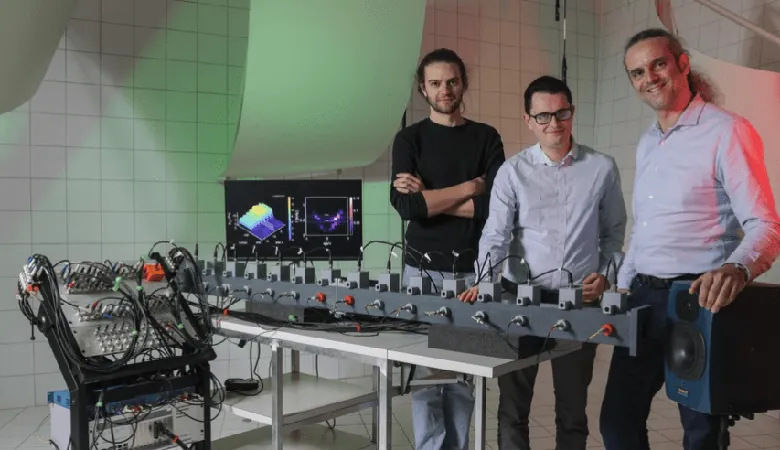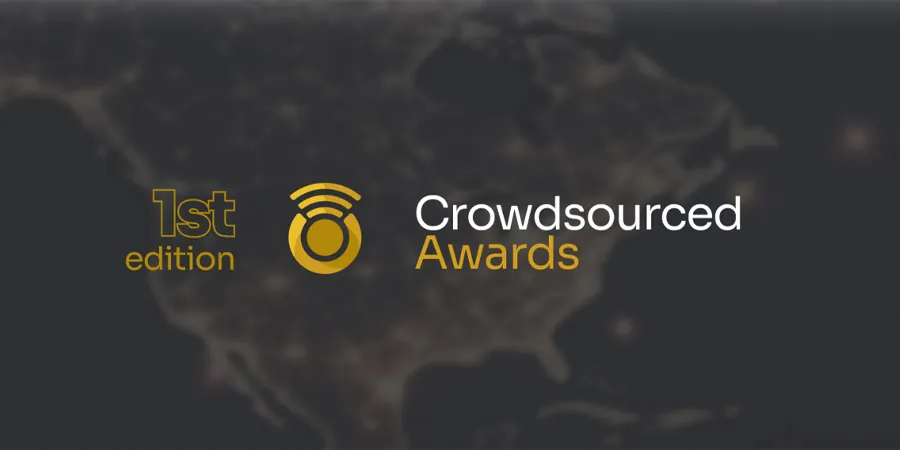
Revolutionizing Quantum Computing: The Sound of Future Innovations!
2025-03-31
Author: Li
Revolutionizing Quantum Computing: The Sound of Future Innovations!
Researchers at the École Polytechnique Fédérale de Lausanne (EPFL) have made groundbreaking strides in overcoming the challenges posed by quantum physics by developing an innovative acoustic system. This system aims to unravel the intricate interactions among densely packed atoms, laying the groundwork for a future where acoustic versions of quantum computers could become a reality.
A Frustrated Physicist's Solution
The mastermind behind this revolutionary project is PhD student Mathieu Padlewski, who, alongside colleagues Hervé Lissek and Romain Fleury at EPFL’s Laboratory of Wave Engineering, has engineered a metamaterial—an artistically crafted material showcasing unconventional properties. Their research culminated in a recent publication in *Physical Review B*, detailing a system that not only examines condensed matter and its macroscopic traits but bypasses the extreme sensitivities tied to quantum phenomena.
According to Padlewski, “We’ve essentially created a playground inspired by quantum mechanics, adjustable for studying diverse systems. This metamaterial is comprised of highly tunable active elements, enabling us to synthesize phenomena that extend beyond natural limitations.” The potential implications of this work are vast, including uses in telecommunications for wave manipulation and energy harvesting.
The Sound of Quantum Mechanics
Drawing a parallel to the uniqueness of human voices, the research emphasizes the significance of the frequency spectrum, which bestows individuality upon sounds. Just as our ears discern multiple frequencies simultaneously, akin to quantum superposition—where a system can exist in multiple states—Padlewski provocatively questions, “If quantum probability waves are indeed waves, why not model them through sound?”
This innovative acoustical approach allows researchers to probe electronic states of solids non-invasively. “It’s like having a blind person navigate through a busy street without a cane,” he explains. “In acoustics, we can explore waves directly without disturbing the system.”
The Acoustic Metamaterial: A New Frontier
At the heart of their work lies a series of "acoustic atoms," a chain made up of 16 interconnected cubes equipped with ports for speakers and microphones. These speakers emit sound waves that are meticulously controlled as they travel through the cubes, while microphones capture the resulting sound waves for precise feedback. This setup serves as modular building blocks, enabling the creation of increasingly sophisticated systems.
Lissek draws a remarkable analogy between their metamaterial and the cochlea, the hearing organ in humans. Just as the cochlea amplifies different frequencies, this acoustic metamaterial has the potential to mimic this function, which could lead to advancements in understanding and treating auditory ailments such as tinnitus.
The Future of Quantum Computing?
This remarkable research not only showcases the innovative intersection of quantum mechanics and acoustics but also hints at a future where acoustic quantum computers may become commonplace. Imagine a world where sound waves power computational processes, revolutionizing technology and energy management as we know it.
With the promise of uncovering new scientific knowledge and potential applications in various fields, the EPFL team is paving the way for a sonic revolution in quantum computing. Stay tuned, as we keep you updated on the latest developments in this exciting frontier!


 Brasil (PT)
Brasil (PT)
 Canada (EN)
Canada (EN)
 Chile (ES)
Chile (ES)
 Česko (CS)
Česko (CS)
 대한민국 (KO)
대한민국 (KO)
 España (ES)
España (ES)
 France (FR)
France (FR)
 Hong Kong (EN)
Hong Kong (EN)
 Italia (IT)
Italia (IT)
 日本 (JA)
日本 (JA)
 Magyarország (HU)
Magyarország (HU)
 Norge (NO)
Norge (NO)
 Polska (PL)
Polska (PL)
 Schweiz (DE)
Schweiz (DE)
 Singapore (EN)
Singapore (EN)
 Sverige (SV)
Sverige (SV)
 Suomi (FI)
Suomi (FI)
 Türkiye (TR)
Türkiye (TR)
 الإمارات العربية المتحدة (AR)
الإمارات العربية المتحدة (AR)